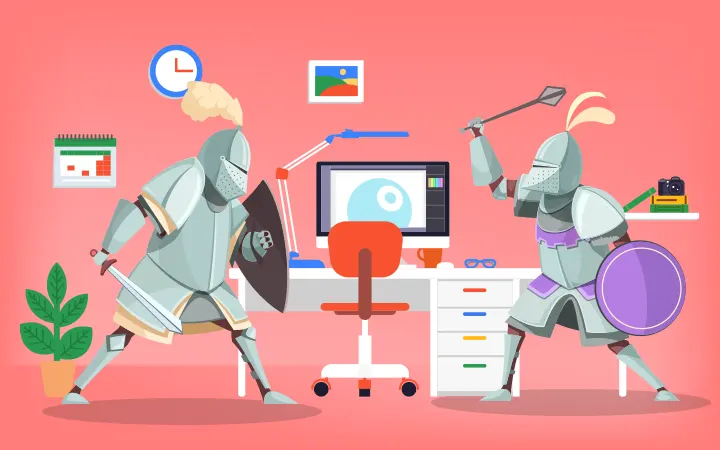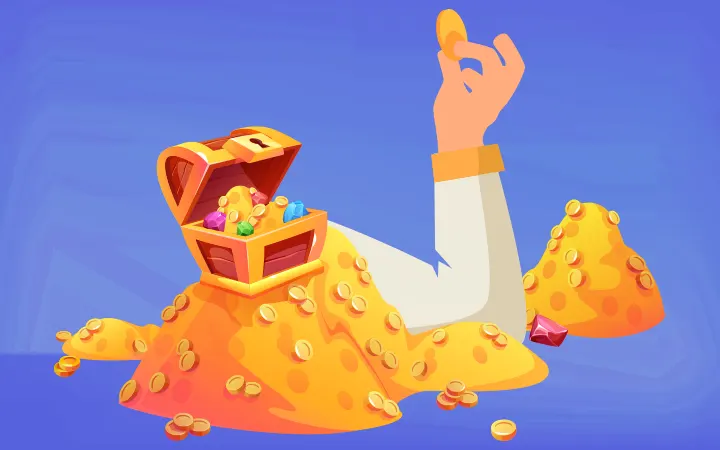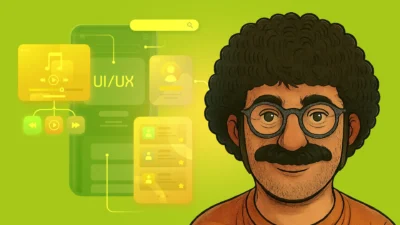The experience of working as a UX designer can vary widely depending on the kind of company you join. A startup might expect you to juggle everything from research to UI, while a corporate enterprise could have a dedicated team for each stage of the design process. Every environment presents its own rhythm, expectations, and growth paths. In the following section, we’ll break down how UX roles evolve across different company types—so you can better align your career choices with your strengths and goals.
- UX Roles in Startups & Small-Scale Innovators
- User Experience Design in Large Enterprises & Corporate Giants
- Working at UX-Focused Design Studios
- UX Careers in Marketing & Advertising Agencies
- Freelance UX Designers & Independent Contract Opportunities
- Specialized UI/UX Design Companies & Niche Studios
- Data-Driven Companies Hiring UX Designers for Analytics & Research
Start-ups & Small-Scale Innovators

If you’re someone who loves wearing many hats, startups and small businesses might be your ideal playground as a UX designer. These companies often operate with small teams and big ambitions, giving you a chance to dive into all aspects of the design process—from early user research to final interface tweaks. The smaller the team, the more visible your work becomes, and the faster you’ll see how your designs shape the product in real time. If you’re someone who likes seeing the direct impact of your work, this environment might better for you.
Advantages of Working in a Startups as a UX Designer
Direct Access to Decision-Makers
In small teams, you’re not far removed from the core decision-makers—you’ll often collaborate directly with founders, product heads, or key stakeholders.
Example: It’s like working in a collage canteen where you can give your direct input to your boss about the enhancement in the menu items on the basis of your observation in student behaviours. your feedback is heard and acted upon quickly.
Diverse Skill Development
Startups often require designers to wear multiple hats—handling user research, prototyping, usability testing, and sometimes even copywriting. This accelerates your growth and builds a solid foundation across the entire UX process.
Example: It’s like running a food truck where you’re the chef, server, and cashier—you gain experience in every aspect of the business.
Creative Freedom
With fewer rigid processes or hierarchies, startups encourage experimentation. You can test bold ideas and apply creative solutions without layers of approval.
Example: It’s like decorating your own room—there are no strict design rules, just space to reflect your personality and creativity.
Tangible Impact
Every design decision you make can directly influence the direction, usability, and success of the product. Your role feels meaningful and measurable.
Example: Imagine planning a group trip with just three people—your suggestions strongly shape where you go and what you do.
Challenges of UX Roles in Startups
Limited Mentorship
Smaller teams may not have senior UX designers to guide or review your work.
Example: It’s like learning to drive without an instructor—you’ll figure it out, but the journey may be bumpy.
Heavy Responsibility
You’re often responsible for the entire UX process, which can be overwhelming for beginners.
Example: Similar to organizing a big family event on your own—it’s doable, but stressful without help.
Fast-Paced & Imperfect Launches
Startups prioritize speed, which means your work may go live before it’s fully refined.
Example: Like cooking dinner in a rush—you serve the meal, even if it’s not restaurant-perfect.
Large Enterprises & Corporate Giants

Working at a large corporation—think tech giants like Google, Microsoft, or Amazon—means being part of a structured, well-established UX team. Here, you’re likely to contribute to one part of a larger product or service. These organizations are known for building iconic user experiences, making them an attractive choice for UX designers aiming to grow under industry-leading professionals.
Larger companies often have teams organized by UX specializations—such as interaction design, research, or content design—which allows you to refine your skills and become a domain expert over time.
Advantages of Working in a Large Company as a UX Designer
Strong Mentorship & Peer Learning
You’ll work alongside seasoned UX professionals and gain insights from different teams and design leaders.
Example:Like joining a music academy—you’re surrounded by experienced artists who help you refine your skills.
Clear Career Path & Growth Potential
With layered design teams and management levels, there are multiple ways to advance your career.
Example: Think of climbing a ladder with many rungs—you always know your next step.
Established Guidelines & Design Systems
Companies maintain consistency through mature design systems and branding standards.
Example: Like assembling furniture with a clear manual—it’s easier to get consistent results.
Well-Defined Roles within Larger Teams
You’ll be responsible for a focused area, reducing the pressure of managing everything yourself.
Example: Like being a specialist in a hospital—you treat one area with precision, rather than handling everything at once.
Room for Specialization
You can become expertise in one or few specific subjects.
Example: Like being a pastry chef—you perfect one craft instead of cooking every course.
Disadvantages of Working in a Large Company
Feeling Less Impactful
With dozens of designers on a single product, your individual contributions might feel diluted.
Example: Like being one voice in a choir—you matter, but your solo isn’t always heard.
Lower Product Ownership
You might work on small features within a massive product suite, limiting your sense of full ownership.
Example: Like painting one wall of a skyscraper—you help build it, but you don’t shape the whole design.
Creativity Bound by Guidelines
Strict design systems can limit your ability to try new things or think outside the box.
Example: It’s like redesigning a screen but only using pre-approved fonts, colors, and components—your ideas must fit within a fixed system.
UX Careers in Design Studios & Creative Agencies

Design studios—also known as creative or product agencies—serve multiple clients across various industries, offering end-to-end services for branding, digital products, websites, and more. As a UX designer in a studio, your work is fast-paced and client-driven. While the agency environment may feel similar to a startup, you’ll be designing for a mix of companies rather than just one product or brand.
This dynamic workplace exposes you to different styles, industries, and user needs—making it an ideal environment for designers who crave variety and enjoy solving fresh challenges every day.
Advantages of Working at a Design Studio
Meaningful Project Impact
If you’re the only UX designer on a project, your input has a major influence on the outcome.
Example: Like being the lead chef for a small event—your taste and creativity define the entire menu.
Diverse Networking Opportunities
You’ll work closely with clients, creative directors, and different teams—building strong professional connections.
Example: Like being a tour guide for different groups—you meet new people and learn new perspectives each time.
Wide Industry Exposure
Since agencies handle multiple clients, you’ll gain hands-on experience across various industries and user types.
Example: Like being a freelance photographer—you shoot weddings, products, portraits, and more, each with its own challenges.
Portfolio-Boosting Brands
Many studios work with well-known clients, allowing you to showcase recognizable names and projects in your portfolio.
Example: Like doing freelance work for a big-name magazine—you get credibility and visibility in your field.
Disadvantages of Working at a Design Studio
Limited Mentorship
You may often be the sole UX designer on a team, which limits learning from more experienced peers.
Example: Like cooking alone in a new kitchen—exciting but harder without someone to guide you.
Repetitive Work (Sometimes)
Some agencies focus on niche industries, leading to similar types of projects over time.
Example: Like painting only landscapes as an artist—beautiful, but creatively limiting after a while.
Lack of Full Ownership
You might join projects mid-way or hand them off before seeing the final product live.
Example: Like designing a car’s interior but never driving it—you contribute, but don’t experience the end result.
Uncertain Launch Outcomes
Clients may change direction or priorities, so some of your work may never be launched or seen by users.
Example: Like rehearsing for a play that gets cancelled before opening night—your work was valuable, but not showcased.
UX Roles in Marketing & Advertising Agencies

Advertising and marketing agencies are creative playgrounds where UX designers contribute to building branded campaigns, digital ads, landing pages, and interactive experiences. Often referred to as “creative technologists,” UX designers in these environments bridge the gap between storytelling and functionality—making sure that marketing content is not just eye-catching but user-friendly.
These roles are perfect for designers who enjoy working on varied short-term projects and are open to blending UX with branding and visual communication.
Advantages of Working at an Advertising Agency as a UX Designer
High Creative Autonomy
With fewer layers of approval, you often have more freedom to shape the direction of your design work.
Example: Like being the lead designer on a short film—you get to make bold creative choices without too much oversight.
Cross-Disciplinary Learning
You’ll pick up skills in adjacent fields like marketing, branding, copywriting, and graphic design.
Example: Like working in a co-working space—you absorb inspiration and ideas just by being around different creative minds.
Diverse Projects, Constant Change
Each new client brings a different challenge, preventing your work from becoming repetitive.
Example: Like being a fashion stylist for different celebrities—every project has a unique vibe.
Networking with Big Brands & Clients
You’ll gain experience collaborating with different companies and industries, often recognizable names.
Example: Like a photographer shooting for different magazines—you build a strong, visible portfolio.
Challenges of UX in Ad Agencies
Lack of Deep Specialization
Projects vary widely, so focusing deeply on one UX skill (like user research or IA) can be difficult.
Example: Like being a general doctor in a walk-in clinic—you treat many issues, but rarely master one specialty.
UX May Not Be the Core Focus
Design work often leans toward marketing goals rather than user-centered product thinking.
Example: Like designing a beautiful shop window that draws people in, but not designing the shopping experience inside.
Independent Freelancers & Contract Designers

Freelance UX designers work independently, typically handling client projects on a contract basis from start to finish. This career path is ideal for those who value flexibility, creative control, and self-management. It’s also a great entry point for aspiring designers to build hands-on experience and a solid portfolio without the constraints of a full-time job. Since freelancers take full ownership, from client communication and requirement gathering to delivery and deadlines, they often develop strong business instincts and a deeper understanding of how design fits into real-world goals.
Advantages of Freelancing in UX Design
Set Your Own Schedule
You control when and how much you work—ideal for those balancing multiple priorities.
Example: Like being your own chef—you decide what, when, and how to cook your daily menu.
Work-Life Flexibility
Freelancing can be part-time, full-time, or project-based—giving you the freedom to shape your lifestyle.
Example: Like picking your own gym schedule instead of following a group class—you adapt it to your pace.
Creative & Project Autonomy
You choose the type of clients and projects you take on, based on your interests and values.
Example: Like a personal stylist choosing which clients to work with—you design your own path.
Build a Portfolio with Real Work
Freelance gigs help you accumulate real-world experience and case studies—great for early-career designers.
Example: Like an aspiring photographer building a gallery by taking on small but meaningful shoots.
Challenges of Freelancing in UX
Lack of Structure
With no manager or set schedule, staying disciplined and meeting deadlines is entirely on you.
Example: Like studying for an exam without a teacher—you’re the planner, executor, and reviewer.
Income Instability
Freelance work can be unpredictable; projects may dry up or be delayed.
Example: Like running a food truck—you might have great days and quiet ones with no sales.
Running a Business
You’re responsible for contracts, billing, taxes, and client communication—beyond just the design work.
Example: Like being a one-person shop owner—you do the designing, selling, and bookkeeping.
Limited Mentorship
Since you work solo, it can be hard to get feedback or guidance from more experienced designers.
Example: Like learning to play guitar without a teacher—you improve, but slower without expert input.
UX Roles in Specialized UI/UX Design Companies

Specialized UI/UX design companies are laser-focused on creating user-first digital experiences. These agencies work across industries and product types—apps, websites, enterprise software, and more—but unlike general design or ad agencies, they concentrate purely on user experience and interface excellence. This makes them an ideal workplace for designers who want to go deep into UX strategy, research, and design execution, surrounded by a team that values usability as much as aesthetics.
Advantages of Working at a Specialized UI/UX Firm
User-Centered Focus
Every project is driven by usability, accessibility, and real user needs—not just branding or visuals.
Example: Like designing a custom workspace where comfort and function matter more than looks.
Exposure to the Full UX Process
From discovery workshops to final handoff, you’ll work on projects end-to-end.
Example: Like building a house—from laying the foundation to adding the final coat of paint.
Team of UX Experts
You’ll be surrounded by UX professionals with varied strengths—researchers, interaction designers, and strategists.
Example: Like working in a kitchen with trained chefs—you learn faster and deliver better meals together.
Higher-Quality Portfolio Work
Since UX is the core offering, the case studies you create here will be rich in strategy and process.
Example: Like photographing a documentary—you don’t just get pretty shots, but meaningful stories too.
Challenges of Working in a Specialized UX Company
High Expectations & Deep Involvement
Projects go deep into user research and testing, which can be demanding and time-intensive.
Example: Like crafting a custom suit—it takes more time, precision, and fittings than an off-the-rack option.
Client-Driven Priorities
Even with a UX focus, clients may push for deadlines or features that challenge ideal design decisions.
Example: Like being a personal trainer—you know what’s best for the client, but they may want shortcuts.
Repetitive UX Problem-Solving
You may work on similar patterns or components across multiple projects, depending on client needs.
Example: Like a tailor making suits—you master it, but the job doesn’t always change dramatically.
UX Roles in Data-Driven & Analytics-Focused Companies

In today’s data-rich digital world, companies that specialize in analytics, SaaS platforms, fintech, or enterprise tools need more than just numbers—they need clarity. That’s where UX designers come in. At data-focused organizations, your role is to translate large volumes of complex information into clear, intuitive user interfaces that guide decision-making. These aren’t apps built for entertainment—they’re platforms that help users track investments, monitor performance, analyze health data, or interpret business KPIs.
UX designers here don’t just make things look good—they make them work better. You’ll partner with data scientists, engineers, and product managers to ensure that dashboards, charts, workflows, and reports are useful, accessible, and human-centered. These environments are ideal for designers who enjoy logical thinking, structured problem-solving, and crafting clarity out of complexity.
Advantages of Working in a Data-Centric UX Environment
Design That Drives Real-World Decisions
In data-heavy platforms, your design choices can influence how users understand trends, uncover insights, or take action.
Example: Imagine designing a stock-trading dashboard—every button, chart, or data point you place affects how someone invests their money.
Deep Problem-Solving Opportunities
You’ll spend more time digging into real user problems, working to make data intuitive rather than overwhelming.
Example: Like turning a financial spreadsheet into a story that a business owner can read in five minutes.
Cross-Functional Collaboration with Technical Experts
You’ll learn to work closely with analysts, developers, and data engineers—gaining exposure to how products are shaped by data-driven thinking.
Example: Like collaborating with a scientist to turn research into a simple explainer video.
User-Cantered Simplification of Complexity
You’ll become skilled at simplifying dense data interactions, which sharpens your UX thinking across all industries.
Example: Like converting a multi-step analytics report into an easy-to-use, interactive dashboard.
Job Relevance in a Growing Sector
As more companies become data-first, the demand for UX designers who understand how to visualize information is growing rapidly.
Example: Data isn’t going anywhere—and neither are the people who help others understand it.
Challenges of UX Design in Data-Heavy Companies
Steep Learning Curve for Technical Concepts
You’ll often need to understand the domain—whether it’s finance, healthcare, or logistics—to design effectively.
Example: Like designing a UI for pilots—you need to understand how planes work to make good decisions.
Limited Visual Exploration
Design freedom may be constrained by the need for simplicity, accuracy, and consistency across information-heavy screens.
Example: Like designing road signs—they need to be functional, not decorative.
Cognitive Load Management
Designing tools that present a lot of information can be mentally demanding, both for you and for your users.
Example: Like building a weather app for scientists—it has to show everything, but in a way that doesn’t confuse.
UX May Be Secondary to Engineering or Data Priorities
Sometimes, data platforms are built around functionality first, with design added later—meaning UX input might come in after major product decisions.
Example: Like decorating a room after the furniture is already fixed—you can improve it, but you’re not starting from scratch.
Is This the Right Fit for You?
If you’re a UX designer who loves solving real problems, values function over flair, and doesn’t mind spending time learning new technical concepts, then data-driven companies can offer some of the most intellectually rewarding roles in the UX field. The work might not always be flashy, but the impact is real—your design decisions could help a doctor make better diagnoses, a marketer track campaigns more effectively, or a CEO make smarter business moves.



